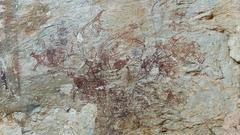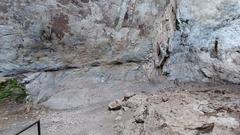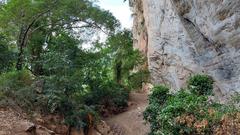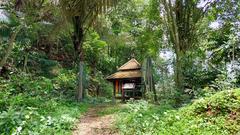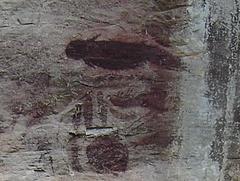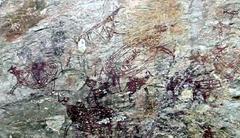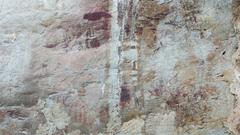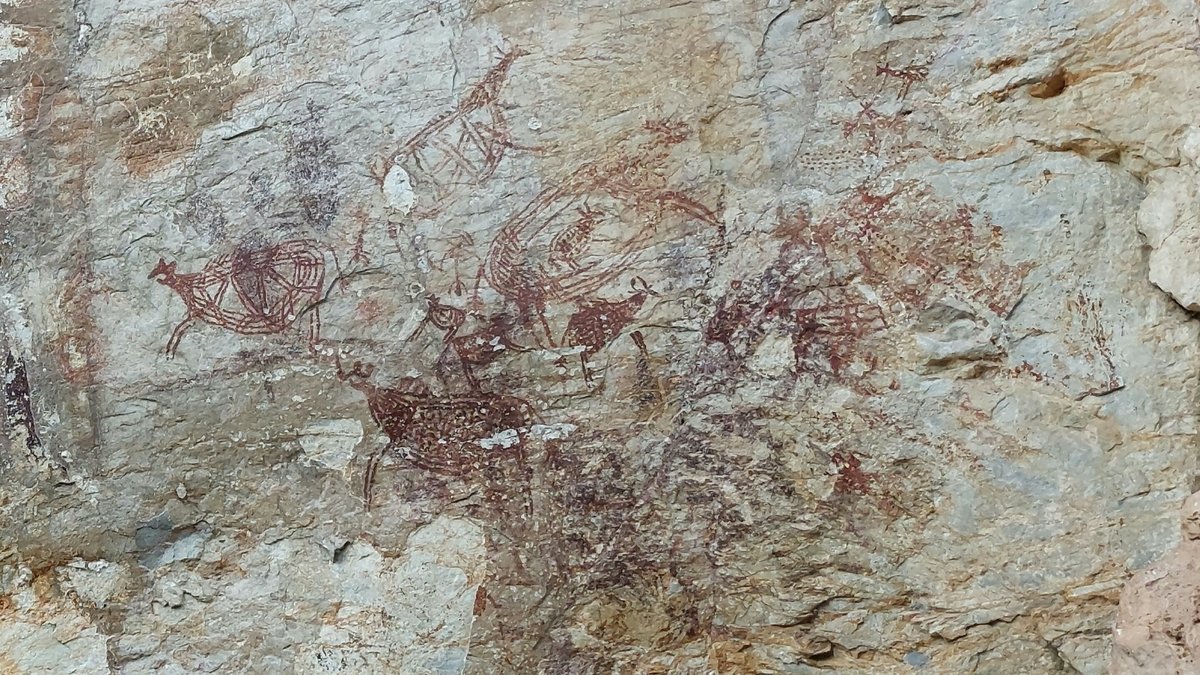
Gua Tambun: Visiting Hours, Tickets, and Historical Insights in Perak, Malaysia
Date: 14/06/2025
Introduction
Gua Tambun, located within the limestone hills overlooking Ipoh in Perak, Malaysia, stands as one of Southeast Asia’s most significant prehistoric rock art sites. Featuring more than 600 ancient red-hued paintings, it offers a rare glimpse into Malaysia’s deep past, with artwork dating back 2,000 to over 12,000 years. First documented in 1959, Gua Tambun’s paintings illustrate the beliefs, daily lives, and artistry of prehistoric communities, connecting Malaysia’s indigenous heritage to the broader region. This guide will provide detailed information on visiting hours, tickets, accessibility, travel tips, and nearby attractions, as well as highlight the cultural and archaeological importance of the site (Ipoh Historical Sites Guide, New Naratif, Tourism Perak).
Table of Contents
- Historical and Archaeological Background
- Visitor Information
- Site Facilities and Safety
- What to Bring and Visitor Etiquette
- Nearby Attractions
- Frequently Asked Questions (FAQs)
- Conclusion
- Additional Resources and Links
Historical and Archaeological Background
Discovery and Documentation
Gua Tambun was first recorded in 1959 by British officer J. M. Matthews, who identified over 80 rock paintings depicting animals, humans, and geometric patterns. Comprehensive mapping in 2009 revealed over 640 distinct rock art elements, making it Malaysia’s largest known rock art site. These findings have provided invaluable insights into the daily lives and beliefs of ancient communities (New Naratif).
Dating and Artistic Features
While exact dating is challenging, most experts place the paintings in the Neolithic period (4,000–2,000 years ago), with some possibly older, extending into the Palaeolithic era. The artwork, created using hematite-derived pigments, features deer, cattle, boars, dugongs, tapirs, turtles, human figures, geometric motifs, and ritualistic postures. The sophisticated “dark-filled contour” technique demonstrates advanced artistic skills.
Cultural and Regional Significance
The rock art at Gua Tambun bridges traditions across Southeast Asia, showing stylistic links to sites in India, Australia, and neighboring regions. For the Orang Asli, Malaysia’s indigenous peoples, Gua Tambun is a powerful symbol of ancestral creativity and cultural identity. The site not only enriches national heritage but also serves as an inspiration for contemporary Malaysian artists (New Naratif).
Conservation and Research Efforts
Gua Tambun faces ongoing threats from natural weathering, vandalism, and limited public awareness. Conservation efforts include digital documentation, high-resolution imaging, and community-driven projects like the Gua Tambun Heritage Awareness Project (2015–2017). These initiatives aim to preserve the site while fostering public appreciation and responsible tourism (Tourism Perak).
Visitor Information
Opening Hours
- Standard Hours: Daily, from 8:00 AM to 6:00 PM (best to visit in daylight for safety and visibility).
- Last Entry: Recommended before 5:00 PM to allow ample time for exploration.
Tickets and Admission
- Entry Fee: Free of charge
- Donations: Encouraged to support ongoing conservation (where facilities exist)
Directions and Accessibility
- Location: West face of Gunung Panjang, about 6 km northeast of Ipoh city center (GPS: 4.60669, 101.129193)
- Getting There: Best accessed by car or taxi; limited public transport. Parking is available near the entrance.
- Site Access: Requires a short, steep hike with approximately 120–141 concrete steps. The trail may be slippery after rain; sturdy footwear is essential.
- Accessibility: Not suitable for those with mobility challenges or for very young children due to uneven terrain and steep steps.
Best Time to Visit
- Dry Season: March to September, to avoid muddy trails and ensure good visibility of the rock art.
- Ideal Hours: Early morning or late afternoon for cooler temperatures and softer light.
Guided Tours and Workshops
- Regular Tours: None scheduled, but occasional guided visits are offered by local heritage groups and tour operators.
- Workshops: Community events and educational programs occasionally take place—check with local tourism offices for updates.
Site Facilities and Safety
- Facilities: Minimal—no restrooms, food stalls, or artificial lighting at the site.
- Amenities: The nearest facilities are in Tambun town or Ipoh city.
- Safety: No wardens or security; visitors must take responsibility for their own safety. Mobile phone reception may be limited.
- Wildlife: Be aware of monkeys, wild boars, insects, and occasionally snakes in the surrounding forest.
What to Bring and Visitor Etiquette
Recommended Items:
- Sturdy, closed-toe shoes with good grip
- Drinking water and snacks (pack out all trash)
- Sun protection (hat, sunscreen, sunglasses)
- Mosquito repellent (preferably with DEET)
- Camera (no flash photography)
- Torchlight or headlamp for enhanced viewing
- Guidebook or printed resources for self-guided exploration
Etiquette:
- Do not touch or deface the paintings
- Stay on marked paths to protect the site
- Supervise children at all times
- Avoid littering and take all rubbish with you
- Respect wildlife and the natural environment
Nearby Attractions
Enhance your Gua Tambun experience by visiting other notable sites:
- Lost World of Tambun: Theme park with hot springs and family attractions
- Tambun Sai Baba Cave Temple: Spiritual sanctuary in the limestone hills
- Ipoh Heritage Trail: Colonial architecture, street art, and markets
- Kek Lok Tong Cave Temple: Cave temple with gardens and scenic views
- Perak Cave Temple: Renowned for murals and panoramic vistas
- Ho Yan Hor Museum: Showcasing traditional Chinese medicine heritage
- Lenggong Archaeological Museum: UNESCO World Heritage Site for prehistoric artifacts
Frequently Asked Questions (FAQs)
Q: What are the visiting hours for Gua Tambun?
A: Open daily from 8:00 AM to 6:00 PM; best visited in daylight.
Q: Is there an entry fee?
A: No, admission is free. Donations for conservation are appreciated.
Q: Are guided tours available?
A: No regular tours, but some local heritage groups and tour operators offer occasional guided visits.
Q: Is Gua Tambun suitable for families with children or elderly visitors?
A: Due to steep stairs and uneven terrain, it is not recommended for very young children, elderly visitors, or those with mobility issues.
Q: Can I take photos inside Gua Tambun?
A: Yes, but flash photography is prohibited to protect the rock art.
Q: Are there facilities on-site?
A: No—plan ahead and bring everything you need.
Conclusion
Gua Tambun is a captivating destination that offers a tangible connection to Malaysia’s ancient past. Its extensive collection of prehistoric paintings, free entry, and accessible location near Ipoh make it an ideal spot for history lovers, cultural explorers, and adventure seekers. Plan your visit during the dry season, wear appropriate footwear, and respect the site to ensure its preservation for future generations. For more travel tips and heritage news, download the Audiala app and follow us on social media.
Additional Resources and Links
- Official Ipoh Tourism Website
- Malaysian Heritage Department
- Ipoh Historical Sites Guide
- New Naratif
- Tourism Perak
- Orang Perak
For a more immersive experience, explore high-quality photos and maps online, and consider joining community events or guided visits when possible. Download the Audiala app for the latest updates, interactive tours, and exclusive heritage content.
Image suggestions: “Gua Tambun rock art in Ipoh,” “Visitors at Gua Tambun entrance,” “Map of Ipoh historical sites.”
